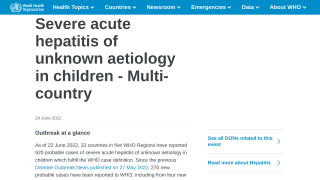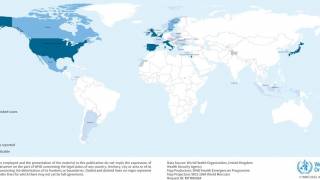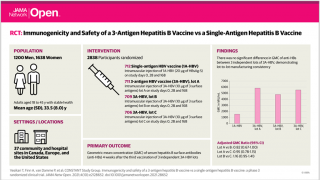Hepatitis D Expanding Worldwide

The analysis from two longitudinal patient databases showed an expanding number of newly diagnosed Hepatitis D virus (HDV), also known as "delta hepatitis," patients in the USA.
Additionally, this information noted larger incidence of HDV co-infection among chronic Hepatitis B virus (HBV) patients, as well.
Hepatitis delta is a disease with a significant impact on global health, which may affect up to approximately 15-20 million people worldwide.
Currently, according to the Centers of Disease and Control (CDC), there is no vaccine for Hepatitis D, but it can be prevented in persons who are not already HBV-infected, by the Hepatitis B vaccination.
Moreover, there is no effective antiviral treatment for hepatitis D.
"Hepatitis Delta is the most aggressive form of viral hepatitis, and due to the absence of an approved therapy, testing for hepatitis delta infection has been limited historically," said Eduardo B. Martins, MD, DPhil, Senior Vice President of Liver and Infectious Diseases Development at Eiger BioPharmaceuticals, Inc., announced from an International Classification of Diseases (ICD) analysis.
"Results from this ICD-10 analysis indicate that only 4.7% of chronic HBV patients are tested for HDV co-infection, even though this represents a 30% increase in HDV testing in 2016 versus 2012.”
“Our data support the need for increasing awareness and diagnosis of hepatitis delta infection," said Dr. Matins.
This report’s conclusions from this US-specific assessment of ICD medical claims, are as follows:
- More than 11.8% of patients with chronic HBV may be co-infected with HDV.
- Only 4.7% of chronic HBV patients are tested for HDV co-infection.
- Even a small increase in HDV testing among chronic HBV patients has yielded significant increases in the numbers of detected HDV/HBV co-infection cases in the US.
- Given the propensity for HDV to cluster geographically, it is important for clinicians to be aware of the growing footprint associated with the HDV patient population and the potential for undiagnosed HDV cases.
These data support the need for increased HDV testing among chronic HBV patients. HDV testing is readily available through commercial laboratories in the US.
The CDC reports Hepatitis D only occurs among people who are infected with the Hepatitis B virus because HDV is an incomplete virus that requires the helper function of HBV to replicate. HDV can be an acute, short-term, infection or a long-term, chronic infection.
Hepatitis D is transmitted through percutaneous or mucosal contact with infectious blood and can be acquired either as a coinfection with HBV or as superinfection in people with HBV infection associated with accelerated liver fibrosis, liver cancer, and liver failure.
The World Health Organization reports the prevalence of HDV varies among different parts of the world.
Globally, HDV infection is reported to be present in approximately 4.3% to 5.7% of chronic Hepatitis B carriers. The prevalence of HDV in patients infected with chronic HBV is even higher in certain regions, including certain parts of Mongolia, China, Russia, Central Asia, Pakistan, Turkey, Africa, and South America, with an HDV prevalence as high as 60% being reported in HBV-infected patients in Mongolia and Pakistan.
Our Trust Standards: Medical Advisory Committee


























